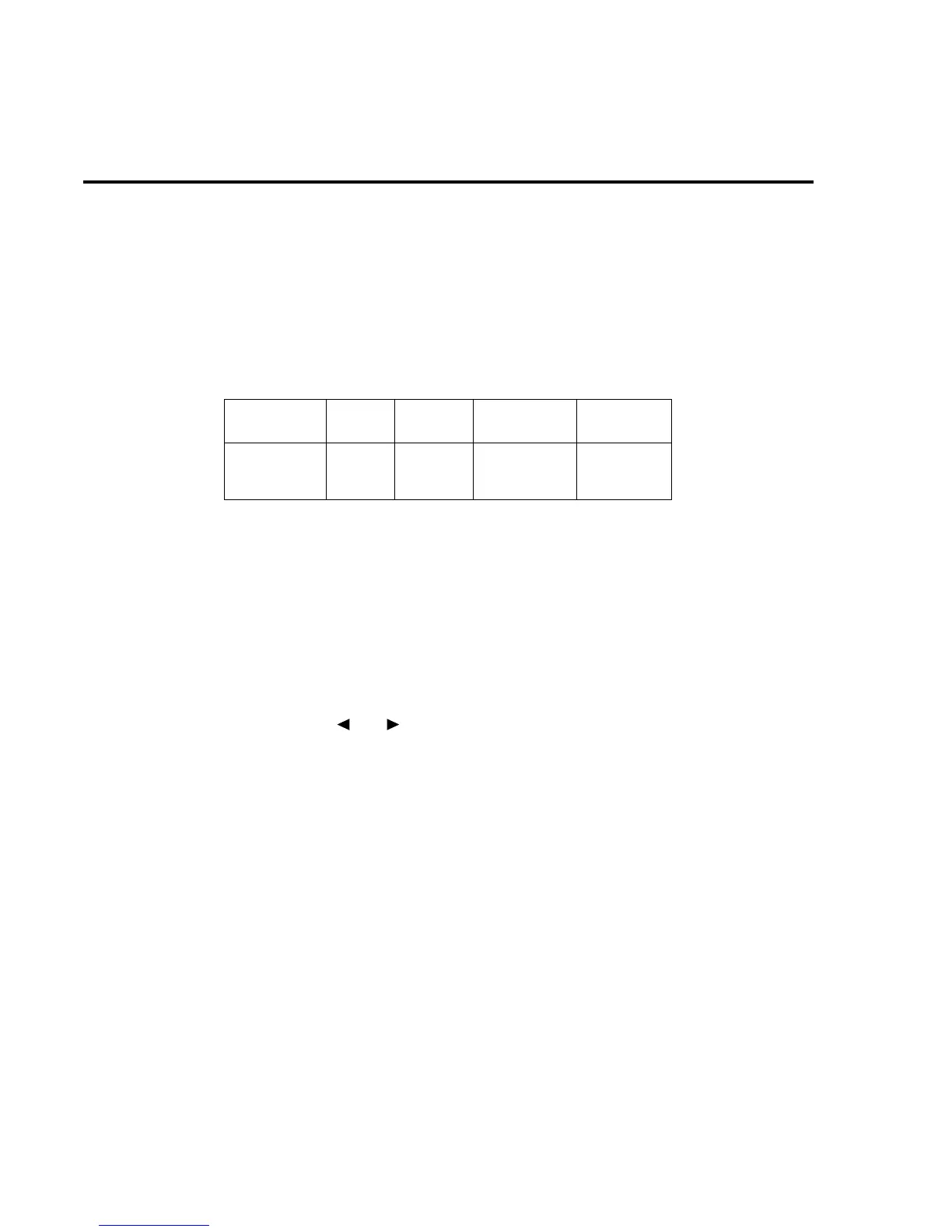Buffer (Data Store)
The Model 2002 has a buffer to store readings at two different rates: normal and burst modes.
The maximum number of readings that can be stored depends on the installed memory option
(standard, MEM1 or MEM2) and the user-programmable data group (full or compact). Storage
capacity is summarized in Table 6.
A full data group includes the reading, units, channel#, reading#, timestamp, and status. A
compact data group does not include the channel# or timestamp. The data group and other buffer
parameters are configured from the CONFIG DATA STORE menu structure.
Normal mode
The following procedure to store readings at the normal rate uses a typical data store config-
uration: a user-defined number of readings wil be stored in the buffer (fill-and-stop). All aspects
of data store configuration and opeation are detailed in Section 2 of the User’s Manual.
1. Set up the instrument for the desired measurements (function, range, etc.).
2. Configure the data store as follows. Note that a menu item is selected by placing the
cur-
sor (using and keys) on
it and pressing ENTER. See MENUS if you need
more information to navigate through the menu structure.
• Press CONFIG
• Press STORE
• Select DATA-GROUP
• Select FULL or COMPACT
• Select CONTROL
• Select FILL-AND-STOP
Note: If you selected the FULL data group, continue on to configure the timestamp. Oth-
erwise, press EXIT to back out of the menu structure.
• Select TIMESTAMP
• Select TYPE
• Select REAL-TIME
• Select FORMAT
• Select ABSOLUTE
Use the EXIT key to back out of the menu structure.
3. Press STORE. The presently programmed buffer size (number of readings to store) is
displayed. If desired, use the cursor keys and the RANGE keys to change the buffer size.
(Incrementing the most significant digit changes buffer size to the maximum.)
Table 6
Memory options
Model
Size
(Bytes) 4
½
-Digit
6
½
-Digit w/
time stamp Type
2002
2002/MEM1
2002/MEM2
8k
32k
128k
2,027
6,909
29,908
404
1,381
5,980
volatile
non-volatile
non-volatile
2-18 Measurement Options

